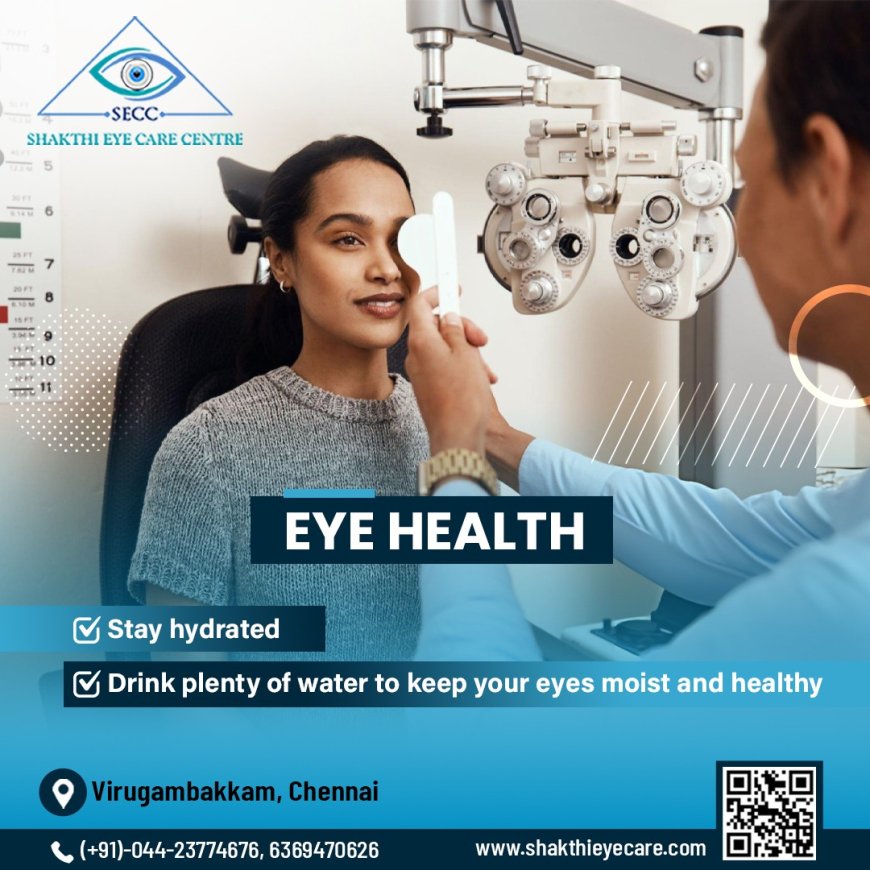How AI is Revolutionizing Early Diagnosis of Eye Diseases like Glaucoma and Macular Degeneration
Discover how AI is transforming early diagnosis of glaucoma and macular degeneration. Learn how KK Nagar's Shakthi Eye Care Centre uses AI for advanced eye care.

The integration of Artificial Intelligence (AI) into ophthalmology has transformed the way eye diseases such as glaucoma and macular degeneration are diagnosed and managed. With the global prevalence of these conditions rising, AI offers a promising solution to improve early detection, enhance diagnostic accuracy, and optimize treatment outcomes. This article explores how AI is reshaping eye care, with a special focus on its applications in diagnosing glaucoma and macular degeneration, and highlights the role of advanced eye care centers like Shakthi Eye Care Centre, a leading eye hospital in KK Nagar, in adopting these cutting-edge technologies.
The Growing Burden of Eye Diseases
Glaucoma and macular degeneration are among the leading causes of irreversible vision loss worldwide. Glaucoma, often called the "silent thief of sight," affects over 90 million people globally, with more than 70% of cases remaining undiagnosed. Similarly, age-related macular degeneration (AMD) is projected to affect 288 million people by 2040. Early diagnosis is critical for both conditions, as timely intervention can slow disease progression and preserve vision. However, traditional diagnostic methods often rely on subjective assessments and can be time-consuming, leading to delays in detection.
AI in Glaucoma Diagnosis
AI has emerged as a game-changer in glaucoma diagnosis, addressing challenges such as subjective interpretation of optic nerve images and variability in diagnostic accuracy. Machine learning (ML) and deep learning (DL) models are now being used to analyze fundus photographs and optical coherence tomography (OCT) scans, enabling automated detection of glaucomatous changes.
For instance, AI algorithms can segment and quantify the optic nerve head (ONH) and retinal nerve fiber layer (RNFL) thickness, key biomarkers for glaucoma. These models have demonstrated accuracy comparable to or even exceeding that of human experts, making them invaluable tools for eye clinics in KK Nagar and beyond. AI also aids in predicting disease progression by analyzing longitudinal data, helping clinicians tailor treatment plans to individual patients.
Moreover, AI-powered tools like ChatGPT-4 have shown potential in combining clinical data, imaging, and visual field tests to diagnose glaucoma phenotypes more accurately than junior ophthalmologists. This technology is particularly beneficial in primary care settings, where access to specialized ophthalmologists may be limited.
AI in Macular Degeneration Diagnosis
AMD, a leading cause of vision loss in the elderly, has also benefited significantly from AI advancements. Deep learning models can analyze OCT and fundus images to detect early signs of AMD, such as drusen and retinal pigment epithelium (RPE) abnormalities. These models can predict the risk of progression to advanced stages, such as geographic atrophy (GA) or neovascular AMD, with high accuracy.
One notable application is the use of AI to customize anti-VEGF treatment for wet AMD. By predicting the number of injections required and the patient's visual acuity response, AI helps optimize treatment regimens and improve patient compliance. Additionally, AI can identify novel biomarkers for AMD progression, offering new insights into the disease's underlying mechanisms.
The Role of Eye Hospitals in Adopting AI
Leading eye hospitals in KK Nagar, such as Shakthi Eye Care Centre, are at the forefront of integrating AI into clinical practice. By leveraging AI-powered diagnostic tools, these centers can offer faster, more accurate diagnoses, reducing the burden on healthcare providers and improving patient outcomes. For example, AI-assisted OCT analysis can detect subtle retinal changes that may be missed during manual examination, ensuring early intervention for conditions like AMD and glaucoma.
Moreover, AI enhances the efficiency of eye clinics in KK Nagar by automating routine tasks such as image analysis and patient triaging. This allows ophthalmologists to focus on complex cases and patient care, ultimately improving the quality of service.
Challenges and Future Directions
Despite its potential, the widespread adoption of AI in eye care faces several challenges. These include the need for large, high-quality datasets, standardization of diagnostic criteria, and addressing ethical concerns such as data privacy and algorithmic bias. Additionally, AI models must be validated in diverse populations to ensure generalizability and fairness.
Looking ahead, the integration of AI with telemedicine holds great promise for expanding access to eye care, particularly in underserved areas. For instance, smartphone-based imaging combined with AI algorithms can facilitate remote diagnosis and monitoring of eye diseases.
Conclusion
AI is revolutionizing the early diagnosis and management of eye diseases like glaucoma and macular degeneration, offering unprecedented accuracy and efficiency. By adopting these technologies, eye hospitals in KK Nagar, such as Shakthi Eye Care Centre, are setting new standards in eye care. As AI continues to evolve, it holds the potential to transform ophthalmology, ensuring better outcomes for patients worldwide.
For those seeking the best eye doctor in KK Nagar, Shakthi Eye Care Centre stands out as a trusted name, combining advanced AI technologies with expert care to deliver exceptional results. Whether you need routine eye exams or specialized treatment, this KK Nagar eye hospital is equipped to meet all your eye care needs.
What's Your Reaction?






























